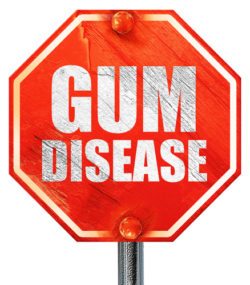 Last week, we discussed the warning signs of gingivitis, also known as gum inflammation. Without treatment, this oral health issue can soon lead to a much more serious issue: periodontal disease. How does gum disease form? What can we do to protect our smiles from this incurable oral health problem?
Last week, we discussed the warning signs of gingivitis, also known as gum inflammation. Without treatment, this oral health issue can soon lead to a much more serious issue: periodontal disease. How does gum disease form? What can we do to protect our smiles from this incurable oral health problem?
Understanding the Cause of Inflammation
The disease often begins with inflammation. Also known as gingivitis, this stage can be treated and reversed. Often, plaque buildup due to poor oral hygiene can irritate the gums and lead to the onset of inflammation. In addition, hormonal changes, family history, smoking, certain medications, and many chronic illnesses can increase the risk of gingivitis. Patients with gingivitis may notice their gums feel sore, appear more red than usual, or bleed easily.
The Dangers of Untreated Gingivitis
Without treatment, inflammation can progress until the gums pull away from the teeth and form pockets. Bacteria can enter these pockets, leading to the onset of the disease. Gum disease is incurable and must be managed in order to avoid the later stages, such as periodontitis. Without treatment, periodontitis can lead to adult tooth loss.
Recognizing and Managing Gum Disease
We urge patients that notice the symptoms of gingivitis to see the dentist right away. At this stage, the problem can potentially be reversed with a scaling and root planing, antibiotic treatment, or even the use of dental lasers. If you have the disease, you should see your dentist every at regular intervals to ensure the problem is being properly managed so you can maintain a whole and healthy smile. If you have any questions about treating gingivitis or managing gum disease, then contact our office today.
To learn more, schedule a consultation online, or call our office today at (847) 230-9703.
